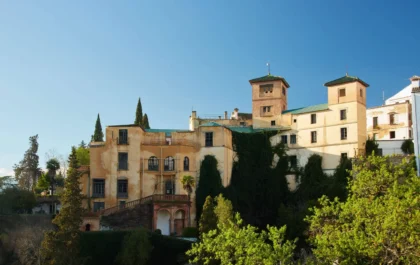Nestled on the northern coast of Argentina, Villa María stands as a captivating and unique city, offering a tapestry of thriving agriculture, rich culture, and artistic heritage. Boasting a population of nearly 250,000, it ranks as the sixth most populous city in Argentina, adorned with monuments and historical sites that narrate tales of architectural grandeur.
Exploring the Agricultural Heartbeat
Founding and Agricultural Roots: Villa María, birthed on March 24, 1867, by Pedro Nolasco Rodríguez, pays homage to his wife, María del Pilar. Translating to “Village of Mary,” the city thrives on its robust agricultural heritage, standing tall as a key player in the Córdoba Province’s grain production, notably soybeans, corn, and wheat.
Melodies of the Music Capital: Reverberating as the “Music Capital” of Argentina, Villa María hosts the prestigious Festival Nacional de Peñas annually in February. Drawing famed musicians and visitors nationwide, the festival harmonizes the city’s cultural symphony.
Academic Excellence: As an education hub, Villa María boasts institutions like the National Technological University (UTN) and the National University of Villa María (UNVM), contributing significantly to the city’s intellectual landscape.
A Hidden Flag Connection: While Rosario is commonly associated with the Argentine flag, Villa María shares a lesser-known tie. During the Argentine War of Independence, Manuel Belgrano, the flag’s creator, designed it while stationed in Villa María.
Chess Enthusiasts’ Haven: Villa María’s international chess tournament, the “Torneo Internacional de Ajedrez de Villa María,” attracts global players, solidifying the city’s status as a focal point for chess enthusiasts.
Industrial Renaissance: Experiencing industrial growth, Villa María hosts diverse sectors like food processing, automotive manufacturing, textile production, and metallurgy, contributing to its economic evolution.
Historic Landmarks: Immersed in history, Villa María showcases landmarks such as the neoclassical Cathedral Basilica and the Museo Histórico Regional, preserving artefacts and documents from the city’s past.
Recreation and Culture: Villa María invites leisure with scenic spaces like Parque Pereira and the Costanera riverside promenade. The city pulsates with a cultural scene, boasting theatres, art galleries, and cultural centres.
Unveiling Villa Maria’s Identity
Points of Significance
- Villa Maria, founded in 1884, ranks among the oldest cities in Córdoba, emphasizing its historical roots.
- Recognized as the “National Capital of Wine,” Villa Maria houses two unique wine museums.
- The city’s local poncho, a fruity liqueur, adds a distinctive flavour to its cultural tapestry.
- Dubbed the “Garden City,” Villa Maria dazzles with parks, squares, and gardens.
- The annual National Rock Festival magnetizes music enthusiasts, adding a vibrant rhythm to the city.
- Home to the Universidad Nacional de Villa María, the city embraces education with diverse programs.
- Historical churches like San Benito and San Francisco de Asís grace Villa Maria, are designated as historical monuments.
- The Friar Pump Room, operational since 1867, stands as the world’s oldest of its kind, showcasing the city’s longevity.
Villa María City: A Tapestry of Culture, History, and Progress
A Glimpse into Villa María’s Past: Founded in 1891, Villa María emerged as a vital railway connection, evolving into a bustling urban centre. Over the years, its population surged, exceeding 100,000 in 2017, solidifying its role as an agricultural and transit hub.
Blending Tradition and Modernity: Villa María’s arable lands yield various grains, and its commercial significance mirrors its historical roots. Recognized as the “Intelligent City of Argentina” in 2015, the city exemplifies the harmonious blend of technology, history, and contemporary amenities.
Unravelling Villa María’s Architectural Marvels
Time Travel in the Villa María Historic Park: Dating back to the 19th century, the Villa María Historic Park encapsulates the city’s history. From an old windmill to the preserved colonial Barber House, this park immerses visitors in the city’s bygone era.
Strolling Through Cathedral Avenue: For a modern touch, Cathedral Avenue in downtown Villa María beckons with historic buildings and landmarks. The Divine Love Church, Centenario Theater, National Bank’s Building, and the Maizarito Bridge adorn this bustling street, offering a glimpse into Villa María’s architectural prowess.
A Mosaic of Monuments: Beyond the Historic Park and Cathedral Avenue, Villa María boasts numerous monuments, providing a rich tapestry for those eager to explore Argentina’s history.
Your Ultimate Travel Guide to Villa María City
Choosing Your Haven: Luxurious downtown hotels like Hotel Webber, cosy guesthouses, and boutique properties such as Alojamiento Puntacamino and BB LOS ALPARES await travellers.
Savoring Local Delights: Indulge in traditional dishes like empanadas and asado at El Rancho Steakhouse or experience modern Argentine cuisine at Mui restaurant. La Parrilla de la Boca and Nico’s Restaurante are also excellent choices.
Exploring the Essence: Take a stroll through Villa María, revelling in its historic architecture. Visit the old train station, delve into the Museum of Regional History, and witness the Avenue of Contemporary Art, showcasing Argentina’s celebrated artists.
Experiencing the Adventure: Embark on hikes to Mount Tenderini for breathtaking city views. Explore the lake on a kayak or stand-up paddleboard, cycle through town, and savour Argentina’s finest wines at local wineries.
Unearth the allure of Villa María City, where history, culture, and modernity converge to offer a unique Argentine experience.
Related posts
Subscribe for newsletter
* You will receive the latest news and updates on your favorite celebrities!
